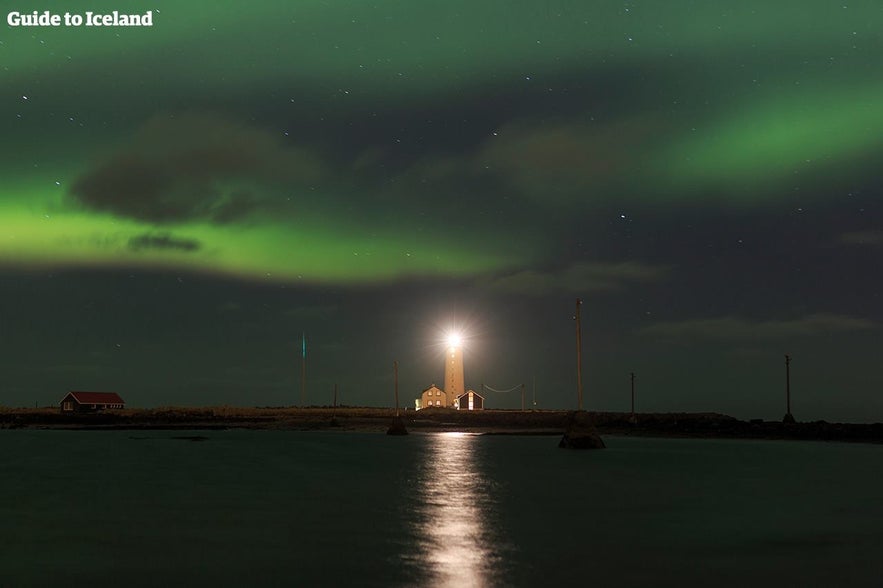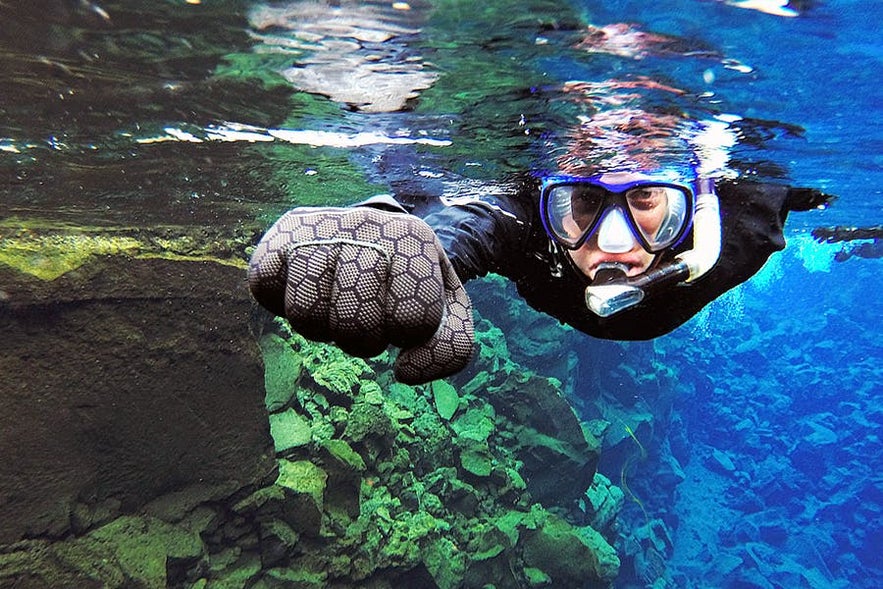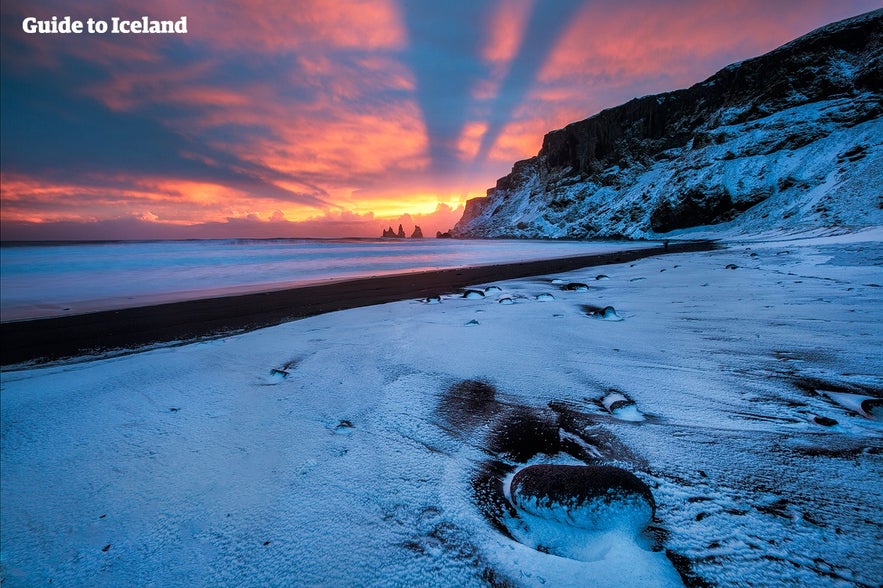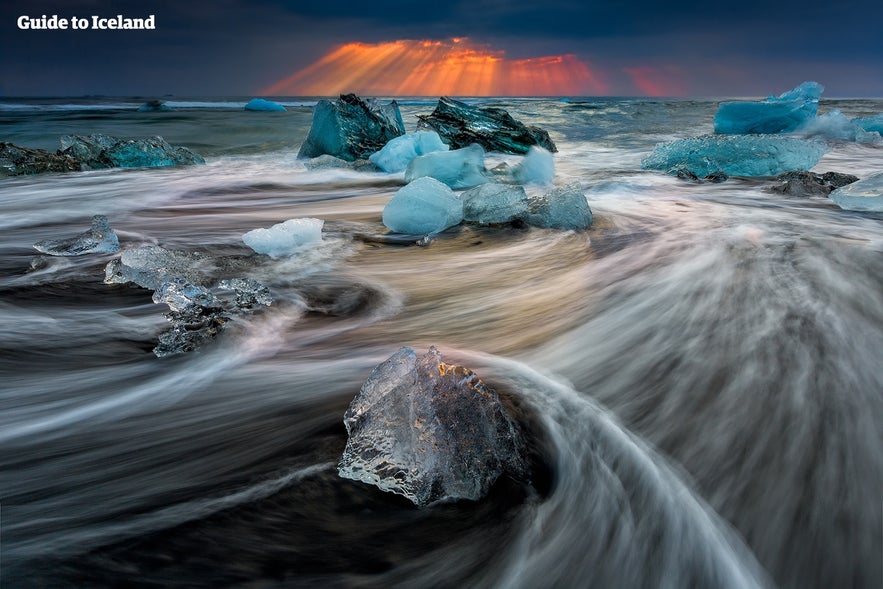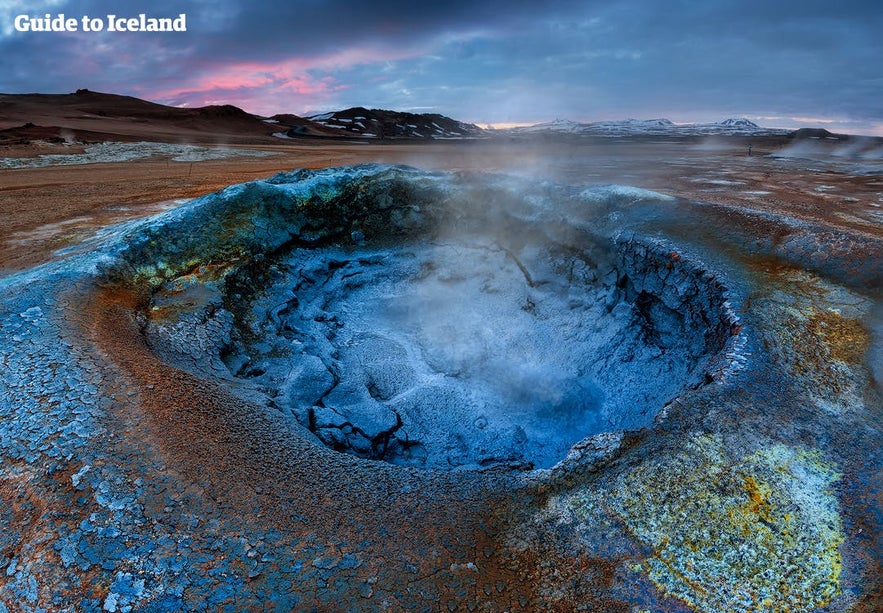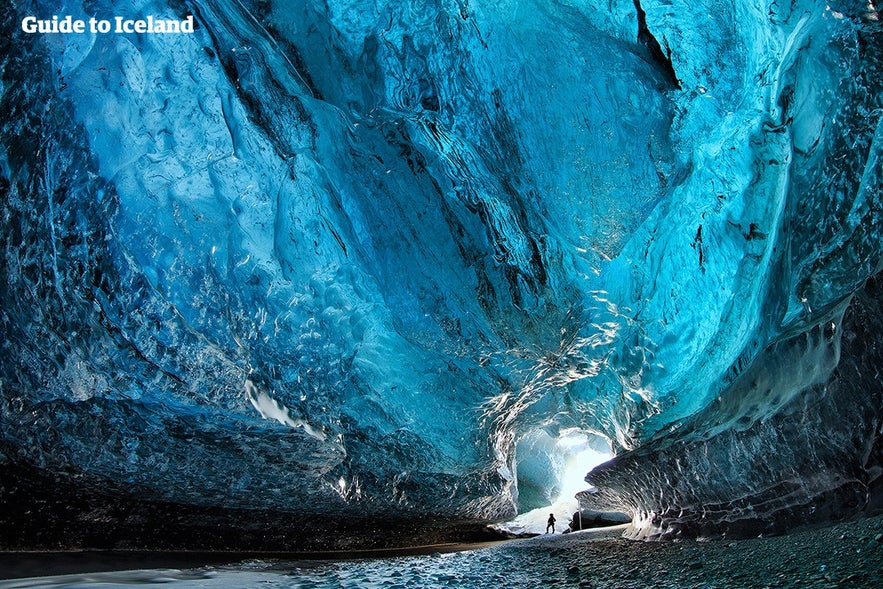
The Ultimate Guide to Iceland in March
- What to Know About March in Iceland
- Driving in March in Iceland
- Best Things to Do in March in Iceland
- Visiting the Ice Caves in March in Iceland
- Spotting the Northern Lights in March in Iceland
- Whale Watching in March in Iceland
- Snorkeling and Diving in March in Iceland
- Glacier Tours in March in Iceland
- Lava Caving Tours in March in Iceland
- Horseback Riding in March in Iceland
- Sightseeing in March in Iceland
- Driving the Ring Road in March in Iceland
- Visiting the Golden Circle in March in Iceland
- Tour the Snaefellsnes Peninsula in March in Iceland
- The Eastfjords in March in Iceland
- Festivals and Traditions in March in Iceland
- Battle of the Bands Festival
- Mustache March
- What is the Weather like in March in Iceland?
- Daylight in March in Iceland
- What to Wear in March in Iceland
- Tour Options for Visiting Iceland in March
- FAQs about Iceland in March
- What is the weather like in Iceland in March?
- Are the roads open in Iceland in March?
- Can I drive around Iceland in March?
- What are the daylight hours in Iceland in March?
- What are the popular attractions to visit in Iceland in March?
- What are the popular winter sports and activities in Iceland in March?
- What are some unique experiences to have in Iceland in March?
- Is it possible to see the Northern Lights in Iceland in March?
- Are there any cultural events or festivals in Iceland in March?
- What should I pack for a trip to Iceland in March?
- Is March a good time to visit Iceland for budget travelers?
- Are there any restrictions or closures in Iceland during March?
- What should I be aware of when traveling to Iceland in March?
- Can I see puffins in Iceland in March?
Find out everything you need to know about visiting Iceland in March. Learn more about what activities are available during this time, such as ice caving and seeing the northern lights. Get some expert tips on what to pack and what to expect from the weather.
Towards the end of March, winter finally begins to lift in Iceland, and there are more hours of sunlight than darkness. The stubborn snow that has settled across the country starts to melt.
As March is in the off-season, it's a great opportunity to find cheap accommodation in Iceland as well as cheap flights to Iceland before the rush of the summer season.
Being in between the Christmas season and the summer season, March is one of Iceland's least busy times, allowing you the perfect opportunity to experience its sights without the crowds. This makes it a good time to explore by renting a car.
If aurora hunting is your top priority, this is a great time to book northern lights hotels so you can enjoy the best possible conditions during your stay. You can also explore the wide selection of tours in March and make the most of your visit to Iceland under the northern lights.
There are also some unique Icelandic festivals and events that take place in March, and activities, such as ice caving and northern lights hunting, are still going strong. Here are some great things to do in Iceland in March to get you started!
- Discover everything about Iceland in Winter
- Read about visiting Iceland in February and visiting Iceland in April
What to Know About March in Iceland
Is March a good time to visit Iceland? Absolutely!
You can still enjoy winter tours and activities like visiting ice caves and chasing the northern lights, but it’s the off-season, making it less crowded. However, there are things to keep in mind if you're thinking of visiting at this time of year.
Driving in March in Iceland
You may be considering renting an affordable car in Iceland. Driving gives you more freedom, but it also means that you may have to deal with icy roads, dark winter nights, snowdrifts, heavy precipitation, high winds, and other drivers who may have less experience than you.
Therefore, renting a car in Iceland in March is only recommended for confident drivers who are used to driving in cold weather. And during the winter months, it's best to rent a four-wheel-drive vehicle.
In March, all vehicles use winter tires, but you can request studded tires for a better grip if you want to be extra careful (until April).
If there's heavy weather, keep an eye out for road markings that might be under the snow, and be careful where you park because towing services are not included in most insurance packages and can be very expensive. Being cautious in sandy or muddy areas is also advised.
When driving in March, you need to be aware not just of the weather but of the road conditions in Iceland too. Avalanches and floods are not unheard of in March, so you need to be sure there is no risk of them on your travels. Always check the weather and road information before setting out on the road.
- Read more: How to Drive Safely in Iceland
Best Things to Do in March in Iceland

The old Icelandic calendar was very sensibly divided into six winter months and six summer months.
According to this calendar, March is part of the winter. That means tours such as ice caving and northern lights hunting are still running. However, the longer days and slightly increasing temperatures mean that you're not limited to winter activities.
Here are some of the best things to do in Iceland in March.
Visiting the Ice Caves in March in Iceland
 The electric blue ice caves in the Vatnajokull glacier are among Iceland’s most incredible attractions. By just looking at a few pictures and videos, you'll understand why they draw travelers from around the world. Most of them are only open for a few months of the year, and thankfully March is one of them.
The electric blue ice caves in the Vatnajokull glacier are among Iceland’s most incredible attractions. By just looking at a few pictures and videos, you'll understand why they draw travelers from around the world. Most of them are only open for a few months of the year, and thankfully March is one of them.
There are two main ice caves to visit in Europe's largest glacier, simply called the Western and Eastern ice caves. They are both equally stunning, with the West Ice Cave having sparkling blue ice that mesmerizes travelers, while the East Ice Cave is more cavernous and has thicker ice walls.
The best way to see these natural wonders is on the best ice cave tour in Iceland, which is exclusive to the customers of Guide to Iceland, allowing people to avoid the crowds and experience this incredible natural wonder with a verified guide.
There are multiple ice cave tours available in Iceland, some take you to man-made ice tunnels in the West, while others are multi-day tours that allow you to control your own itinerary while enjoying the winter in Iceland.
You'll need sturdy hiking boots and warm, waterproof clothing. Navigating the glaciers without a trained guide is extremely dangerous, so it’s necessary to join a tour.
This 2-day South Coast and Jokulsarlon lagoon tour is available throughout March and takes you ice caving and northern lights hunting.
Spotting the Northern Lights in March in Iceland
Seeing the northern lights is at the top of the list for many people traveling to Iceland. Thankfully, it's still possible to see them in March.
Whenever the sky is dark and clear, and there's the right amount of solar activity, you have a great chance of spotting the aurora borealis dancing in the sky.
The best way to find the lights is by taking northern lights tours, as you don't have to worry about driving in challenging conditions and are brought straight to the best spots. There are plenty of options if you're coming from Reykjavik.
You could join this magical northern lights minibus tour or hop onto this super jeep northern lights tour with a photographer guide for a more personal experience.
For an even more unique experience, you could take a northern lights boat cruise out into Faxafloi bay, which departs from Reykjavik harbor.
Staying in Reykjavik is not recommended if you want to see the northern lights because of light pollution. If you don’t want to go far from the city, you can take a ferry to Videy island to try and see them.
- Learn about the Northern Lights in Iceland - When & Where To See the Aurora
Another option is to rent a car and search for the aurora yourself using Iceland's northern lights forecast as your guide. You should, of course, only be hunting in the dark hours, so the evening is the best time.
Keep in mind that renting a car in Iceland in March is a little risky because the roads can still have snow and ice. However, it can be a great way to explore the country as long as you are comfortable driving in Iceland.
Whale Watching in March in Iceland
Photo from Scenic 3 Hour Whale Watching Boat Tour in Faxafloi Bay with Transfer from Reykjavik
Whale watching in Iceland is a great activity all year round. Even in the depths of winter, you can often spot pods of white-beaked dolphins and harbor porpoises. However, in March, the great whales begin to return from their breeding grounds.
If you decide to go on whale-watching tours, you have the best chance of seeing humpback whales and minke whales, but you can also spot orca, fin, and blue whales. Beaked, pilot, and sperm whales also sometimes make an appearance.
Photo from Whale Watching Tour with Transfer from Akureyri
Many tours set off from Reykjavik in a standard whale-watching boat, as the weather can be too volatile for smaller RIB boat vessels.
You can also go on a whale-watching tour of the Breidafjordur bay departing from Olafsvik harbor on the north side of the Snaefellsnes peninsula. This area provides you with the best chance of seeing orcas in the country.
For those who've ventured north, you can take a whale-watching tour from Akureyri. This journey also takes you along one of the longest fjords in all of Iceland.
If you want to make the most of your time, you can also choose to combine activities by taking this whale watching and northern lights boat tour.
- Check out the Best Guide to Whale Watching in Iceland
Snorkeling and Diving in March in Iceland

Photo from 3-Hour Guided Silfra Diving Tour in a Drysuit with Hot Drinks
Yes, you can snorkel and dive in Iceland in March! The best and most popular destination is the Silfra fissure. This ravine in Thingvellir National Park is also a freshwater spring and has a visibility of over 300 feet (100 meters).
Even though the water is 35.6 F (2 C), snorkeling in Iceland is a truly thrilling activity you shouldn't miss. This activity is growing in popularity among travelers thanks to Iceland's unique underwater sights.
Photo from Brilliant 9-Hour Combo Tour with Silfra Snorkeling and the Golden Circle from Reykjavik
Note that you must meet the following conditions to snorkel in Iceland (though requirements can vary between tour providers):
Drysuit Snorkeling
- Minimum age: 12
- Maximum age: 60
- Minimum height: 4 feet 9 inches (145 centimeters)
- Minimum weight: 106 pounds (45 kilograms)
- Experience needed: must be a swimmer
Wetsuit Snorkeling
- Minimum age: 14
- Maximum age: 60
- Minimum height: 4 feet 11 inches (150 centimeters)
- Minimum weight: 110.3 pounds (50 kilograms)
- Experience needed: must be a swimmer
Drysuit Diving
- Minimum age: 17
- Maximum age: 60
- Minimum height: 4 feet 11 inches (150 centimeters)
- Minimum weight: 106 pounds (45 kilograms)
- Experience needed: At least 10 logged drysuit dives OR be drysuit diving certified
Snorkeling is usually done in a drysuit for added protection, but the daring may choose to snorkel in a wetsuit. For scuba diving tours, a drysuit is always required. Additionally, you cannot dive or snorkel while pregnant, and you will need a waiver if you:
- Are over 60
- Are over 45 and a heavy drinker or pipe smoker
- Have a history of respiratory, circulatory, or neurological problems
All tours are led by experienced divemasters who will ensure you’re confident with the equipment and temperatures before setting out.
- See also: Scuba Diving and Snorkeling in Iceland
Glacier Tours in March in Iceland

Photo from South Coast Minibus Tour with Glacier Hike & Transfer from Reykjavik
Iceland’s glaciers cover 11% of the country’s surface, and many people travel to Iceland to see them.
Most glacier hikes from Reykjavik go to Solheimajokull, an outlet glacier of the Myrdalsjokull glacier on the South Coast.
Solheimajokull glacier is 98 miles (158 kilometers) south of Reykjavik, close to Seljalandsfoss and Skogafoss waterfalls and Eyjafjallajokull volcano.

Photo from Glacier Hiking Tour on Solheimajokull
Two fantastic ways to experience Iceland's glaciers are this Solheimajokull glacier hiking tour and the 10-hour super jeep tour to the Eyjafjallajokull volcano and glacier, which departs from Reykjavik.
For a more challenging experience, this glacier hiking tour of the Falljokull glacier departs from the Skaftafell Nature Reserve in Southwest Iceland. It includes a visit to an ice cave and is a must-see destination for those who want to fully experience Iceland's natural beauty.
Photo from Snowmobile Tour on Langjokull Glacier with Transfer from Gullfoss Waterfall
Snowmobiling in Iceland is another extremely fun and popular activity to do.
Many people choose this snowmobile tour on the Langjokull glacier, which has a transfer from the Gullfoss waterfall. Another popular option is this super jeep and snowmobiling on the Vatnajokull glacier, the largest glacier in Europe.
Travelers often choose to include snowmobiling with another experience, such as with this Golden Circle and snowmobiling tour from Reykjavik.
- Learn more: Snowmobiling in Iceland - everything you need to know
Lava Caving Tours in March in Iceland

Photo from Classic 1-Hour Raufarholshellir Lava Caving Tour
Lava cave tours are an excellent option when traveling to Iceland in March as the lava tubes are still decorated with beautiful ice formations.
Icicles dangle from the ceiling, and the ice stalagmites and stalactites make the tunnels feel like they’re part of a fairytale grotto.
For an accessible and easy-going trip, you could take the family-friendly Vidgelmir lava cave tour or the ever-popular Raufarholshellir lave tunnel cave tour, which has comfortable paths throughout.
- Read more about Caves in Iceland
Horseback Riding in March in Iceland
Photo from Exceptional 9-Hour Horseback Riding Tour with Geothermal Pool and Transfer from Reykjavik
Horseback riding is a popular activity among Icelanders and travelers alike, regardless of the season. Riding an Icelandic horse is an authentic Icelandic experience, as they're part of the country's history and culture.
Icelandic horses are remarkable creatures. They’re powerful and resilient in the face of challenging weather. But they’re also playful, social, and intelligent, so you're sure to make friends if you meet one. Icelandic horses are famous abroad for their five gaits, including the "tolt," which is unique to them.
If you'd like to go on horse riding tours in Iceland, there are many options available. You could go for this horseback ride on a black sand beach in Vik or trek with horses to the hot springs in Gufudalur Valley.
If you'd prefer a full-day trip, why not combine horse riding with a Golden Circle tour or take this tour that includes both whale watching and horse riding?
- Learn more: The Icelandic Horse | A Comprehensive Guide
Sightseeing in March in Iceland
Iceland offers a wealth of incredible things to see in March. Every region except the Highlands should be at least partially accessible. Be aware that the weather can be unpredictable, though. There can occasionally be flooding, heavy snowfall, or unexpected avalanches.
Driving the Ring Road in March in Iceland
The Icelandic Ring Road, or Route 1, circles the entire country and can usually be completed during March, as long as you have some flexibility in your itinerary in case of bad weather.
Going counterclockwise on this route takes you along the South Coast, through the Eastfjords, across North Iceland, and down the west (without turning into the Westfjords or the Snaefellsnes peninsula).
The roads in Iceland are generally well-maintained, but ice and heavy snowfall could affect your journey. Winter self-drive tours are mostly recommended for those with experience driving in icy winter conditions.
The South Coast of Iceland is one of its most popular regions. It hosts many of the most famous sites that are accessible from Route 1.
You can see waterfalls like Seljalandsfoss and Skogafoss, glaciers such as Eyjafjallajokull and Solheimajokull, and coastal features such as the Dyrholaey rock arch and the Reynisdrangar sea stacks.
These sights should be accessible in March, though it may not be possible to take a walk around the Seljalandsfoss waterfall due to icy conditions.
You should also be careful if admiring the Reynisdrangar sea stacks from Reynisfjara black sand beach. Sadly, sneaker waves along the shore can be very dangerous and even fatal, so please don’t stray too far out into the forceful waters. There is a warning light system in place which helps you see which areas of the beach are safe at any time.
The South Coast section of the Ring Road ends at the Jokulsarlon glacier lagoon, which is as majestic in March as it is the rest of the year, though some travelers extend the trip to the town of Hofn.
The next section of the Ring Road, between Reykjavik and Akureyri, goes through the country’s greener western region.
When traveling this route, you'll be tempted to detour and see sites like the Hraunfossar region, Barnafoss waterfalls, the Deildartunguhver hot spring, and the Vatnsnes Peninsula, the best seal-watching spot in the country.
- Learn about the Top Things to See From Akureyri to Snaefellsnes
When it arrives in the north of the country, the Ring Road will take you to the Lake Myvatn region.
The landscapes here will mesmerize any visitor, but Game of Thrones fans especially are in for a treat. Many of the Game of Thrones filming locations in Iceland are in this region. For instance, the Myvatn area is the "North of the Wall," where Mance Rayder’s troops camp.
- Check out the Ultimate Guide to Lake Myvatn
Visiting the Golden Circle in March in Iceland
Iceland’s most popular sightseeing trail is the Golden Circle. It's definitely worth including in any visit to Iceland.
It's easy to follow the route all year round, even throughout March. The trail will bring you to three of Iceland’s most famous sites: Thingvellir National Park, Geysir Geothermal Area, and Gullfoss waterfall.
The Thingvellir National Park is a UNESCO World Heritage Site. It was the founding site of the Althingi in the year 930, which is the world’s oldest parliamentary assembly.
The national park is located in both North America and Europe, in a geological sense, as it sits between the North American and Eurasian tectonic plates. This is what gives it such incredible geology, like the Silfra ravine.
 The Geysir Geothermal Area has its own claim to fame. The English word "geyser" comes from the Icelandic "Geysir," the name of Iceland's most famous hot spring geyser.
The Geysir Geothermal Area has its own claim to fame. The English word "geyser" comes from the Icelandic "Geysir," the name of Iceland's most famous hot spring geyser.
Though Geysir is no longer active, its sister, Strokkur geyser, erupts every five to ten minutes and can blast water higher than 66 feet (20 meters). The surrounding area is also filled with hot springs, steam vents, and mud pots.
The final site on the Golden Circle trail is Gullfoss, perhaps the best-known waterfall in Iceland. The waterfall is even more magical when the rocks around it are covered with glimmering ice, and the surrounding area is buried deep in snow. So, March isn't a bad time to visit.
As well as the main sights, there are plenty of worthwhile detours along the Golden Circle with more natural beauty to discover.
- Discover the Ultimate Guide to Iceland's Golden Circle
- See also: Top 11 Frozen Waterfalls in Iceland to See in Winter
Tour the Snaefellsnes Peninsula in March in Iceland
The Snaefellsnes Peninsula is accessible year-round and continues to attract many visitors. Due to the diversity of its landscapes, this area is often nicknamed "Iceland in Miniature."
Though the mountain passes are likely to be closed (and really should be avoided in March even if open), you can still drive along both sides of the peninsula.
The route will introduce you to places like Ytri Tunga beach, which is famous for its seals. There are also the Londrangar basalt cliffs, Snaefellsjokull glacier and volcano, the fishing villages of Arnarstapi and Hellnar, and the Kirkjufell mountain, to name a few.
If you get charmed by this beautiful peninsula, you can book accommodation in Snaefellsnes and make the most of your time there.
The Eastfjords in March in Iceland

While the warmer months offer the best conditions, you may be able to explore some of the East fjords in March, if weather conditions allow.
While snow will block some of the roads, particularly the mountain passes, you should still be able to navigate the Ring Road and some of the coastal routes.
You can visit the town of Egilsstadir, the largest town in the region, which is close to many attractions, such as the Hallormsstadarskogur forest and the mystical Lagarfljot lake. You may be able to access some of the charming coastal villages but this will depend on weather and road conditions.
As mentioned earlier, a four-wheel-drive vehicle is essential if you plan to drive through the Eastfjords yourself in March.
- See more about the Best Places to Visit in East Iceland
- See also: The Ultimate Guide to Iceland's East Fjords
Festivals and Traditions in March in Iceland
Reykjavik in March is a busy time. Many of the festivals in Iceland in March take place in the capital. Easter activities also sometimes cross over into March, and many locals will have several days off to celebrate.
Iceland has plenty of unique traditions that take place over this period. Taking part in "Bun Day," "Explosion Day," or "Ash Day" could add some extra fun to your visit and help you to experience local culture.
Battle of the Bands Festival
Iceland’s Battle of the Bands, otherwise called the Icelandic Music Experiments, is a competition between up-and-coming bands from Iceland with members between 13 and 25 years old.
The competition has produced many success stories. Perhaps most notably, the band Of Monsters and Men won the competition in 2010 and rose to fame on the international stage in less than a decade.
- See also: The Ultimate Guide to Icelandic Bands
Mustache March
November is nicknamed "Movember" or "No-Shave November" in many other countries. It has become traditional for men to grow out their mustaches during this month to raise awareness about men's health issues.
But Icelanders prefer to grow out their facial hair in March and seek to raise awareness and funds for a broad cross-section of cancer research. They call the occasion "Mustache March" or 'Mottumars' in Icelandic. Even the city buses have mustaches stuck on their fronts!
The initiative is usually advertised with some very quirky advertisements, one of which you can see in the video above, and locals can even compete in a beard competition as a form of fundraising.
If you're coming to Iceland in March, consider growing your mustache to fit in with the beardy crowd! You can also buy special socks to support the initiative, which can be found in grocery stores and other shops around Iceland during this time.
What is the Weather like in March in Iceland?
 How cold is Iceland in March? The average low temperature is 28 F (-2.2 C), and the average high temperature is 38 F (3.3 C), making it relatively frosty.
How cold is Iceland in March? The average low temperature is 28 F (-2.2 C), and the average high temperature is 38 F (3.3 C), making it relatively frosty.
The weather in Reykjavik in March tends to be warmer, but even the warmest recorded temperature over the past two decades was only 54 F (12.4 C). And the coldest was 9.5 F (-12.5 C). So even if you’re only visiting the capital, don’t underestimate the weather in Reykjavik in March.
There's an average of 3.3 inches (84 millimeters) of precipitation per day throughout the month, which predominantly falls as rain, though it's not unusual to have snow.
Daylight in March in Iceland
In March, the winter season is slowly starting to fade away so you'll have more daylight than during the height of winter. To prepare for your trip, compare the different daylight hours during the beginning and end of March:
March 1
- Time of sunrise: 8:34 AM
- Time of sunset: 6:46 PM
- Hours of daylight: 10 hours and 11 minutes
March 31
- Time of sunrise: 6:48 AM
- Time of sunset: 8:16 PM
- Hours of daylight: 13 hours and 27 minutes
- See also: Understanding Time in Iceland
What to Wear in March in Iceland
If you are traveling to Iceland in March, be prepared for cold and potentially wet weather. The weather in March in Iceland can change quickly, so it might still rain even if the weather seems pleasant in the morning. So don't forget your waterproofs and warm layers as you leave your accommodation.
Warm winter clothing, complete with thermal underwear and windproof outerwear, is essential for visiting Iceland in March. A hat and a good pair of gloves are also required for exploring the outdoors. Here is a list of essentials to pack for your Iceland winter trip.
You should check the weather forecast each day to plan ahead. Compared to the darker winter months, storms are less common in March, but they can still happen. High winds often accompany them, so be sure to check for weather warnings.
- Check out: What To Pack for Iceland for All Seasons
- See also: The Weather & Temperature in Iceland
Tour Options for Visiting Iceland in March
Many tours in Iceland in March include must-see attractions and authentic experiences such as chasing the northern lights, exploring ice caves, and witnessing spectacular winter landscapes.
There are several ways you can enjoy these activities on your holiday in Iceland. You can book guided winter tour packages, in which all of your accommodation, transfers, and tours are taken care of before arrival.
Or it may suit you better to book a self-drive winter tour. This means you'll navigate the country yourself with a car rental but have your itinerary and your accommodation pre-organized for you.
If you want to split your time between enjoying the capital and the rest of the country, you can also book accommodations in Reykjavik and take advantage of some of the fantastic day tours from Reykjavik.
With so many options available to you, it's worth spending some time browsing and researching to find the best tour package for you.
March in Iceland is truly remarkable. It's an excellent time to visit if you seek the wintry landscapes, sparse crowds, and longer spring days to fill with activities. As long as you dress appropriately and make responsible choices regarding driving and tours, you're sure to have a great visit to the Land of Ice and Fire!
FAQs about Iceland in March
What is the weather like in Iceland in March?
Iceland in March is still winter, with average temperatures ranging from -1°C to 4°C (30°F to 39°F). It can be cold, windy, and wet, with occasional snowstorms. Visitors should dress warmly and bring waterproof or water-resistant clothing.
Are the roads open in Iceland in March?
The roads in Iceland are generally open year-round, but some roads in rural areas may be closed or impassable due to snow or ice. Visitors should check road conditions before setting out on a journey and consider renting a four-wheel drive vehicle.
Can I drive around Iceland in March?
Yes, visitors can still drive around Iceland in March, but should be aware that the weather can be unpredictable and some roads may be closed due to snow or ice. Visitors should check road conditions before setting out on a journey and consider renting a four-wheel drive vehicle.
What are the daylight hours in Iceland in March?
In March, Iceland experiences around 12-13 hours of daylight, with sunrise around 7:30 AM and sunset around 7:30 PM. Visitors can enjoy the longer daylight hours for sightseeing and outdoor activities.
What are the popular attractions to visit in Iceland in March?
In March, visitors can enjoy winter activities such as snowmobiling, glacier hiking, and ice climbing. Popular attractions to experience include the Northern Lights, ice caves, and hot springs. The Golden Circle route is also a popular option, with highlights such as the Geysir geothermal area and the Gullfoss waterfall.
What are the popular winter sports and activities in Iceland in March?
March is a great time for winter sports and activities in Iceland, including snowmobiling, glacier hiking, and ice climbing.
What are some unique experiences to have in Iceland in March?
In March, visitors can enjoy unique experiences such as dog sledding, ice fishing, and visiting an ice cave. Visitors can also enjoy the beauty of the winter landscape and the opportunity to see the Northern Lights.
Is it possible to see the Northern Lights in Iceland in March?
Yes, it is possible to see the Northern Lights in Iceland in March, as the winter months offer the best chances for viewing. However, visitors should be aware that the Northern Lights are a natural phenomenon and can never be guaranteed.
Are there any cultural events or festivals in Iceland in March?
The Reykjavik Food and Fun Festival takes place in March and features world-renowned chefs cooking at the many high-quality restaurants in Reykjavik. Other events include Battle of the bands, Easter celebrations, and St. Patrick's Day festivities in Reykjavik.
What should I pack for a trip to Iceland in March?
Visitors should pack warm, waterproof, and windproof clothing, including a heavy coat, thermal layers, gloves, and a hat. Sturdy waterproof boots with good traction are also recommended. Other useful items to pack include a camera, binoculars, and a portable phone charger.
Is March a good time to visit Iceland for budget travelers?
March can be a good time to visit Iceland for budget travelers, as it is considered the off-season and some hotels and tours may offer lower rates. However, visitors should still expect to pay higher prices than in many other countries.
Are there any restrictions or closures in Iceland during March?
Mostly not but tourist attractions, such as museums and restaurants, may have limited hours or be closed in March, especially in more remote areas. Visitors should check the opening times and availability of attractions and services in advance.
What should I be aware of when traveling to Iceland in March?
Visitors should be aware of the weather conditions and dress appropriately. Roads may be icy or snowy, and daylight hours can be limited. It is also important to be aware of the dangers of avalanches and to check for travel warnings and updates.
Can I see puffins in Iceland in March?
Puffins do not return to Iceland until April or May, so they are not typically seen in March. However, visitors may still be able to see other bird species, such as the snow bunting.
Have we answered your questions on what Iceland is like in March? Did you find out what to do in Iceland? Did any of the festivals and events in Reykjavik in March catch your eye? Let us know which tour or event you’re most intrigued by in the comments.
Other interesting articles

8 Amazing Black Sand Beaches in Iceland
One of the iconic features of Iceland's landscape is its black sand beaches, where the remnants of volcanic activity meet the steady embrace of the North Atlantic's waves. Experience the raw, untame...Read moreLakes in Iceland
Which lakes are the most beautiful in Iceland and where can you find them? Read on and discover all you need to know about the natural marvels that make up Iceland's water world. Iceland is dotte...Read more
Complete Guide to the 2022 Eruption of Fagradalsfjall Volcano
Learn everything you need to know about the 2022 Fagradalsfjall volcano eruption in Iceland! How strong was the eruption? Can you visit the volcano now? How do you get there? Was the eruption danger...Read more

Download Iceland’s biggest travel marketplace to your phone to manage your entire trip in one place
Scan this QR code with your phone camera and press the link that appears to add Iceland’s biggest travel marketplace into your pocket. Enter your phone number or email address to receive an SMS or email with the download link.


